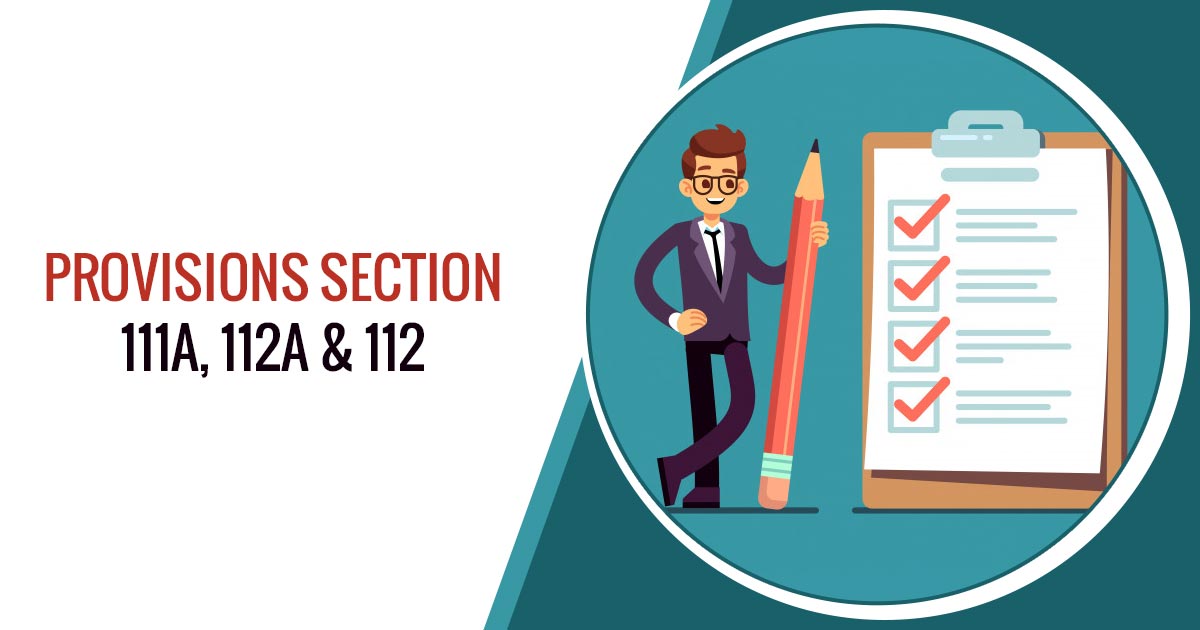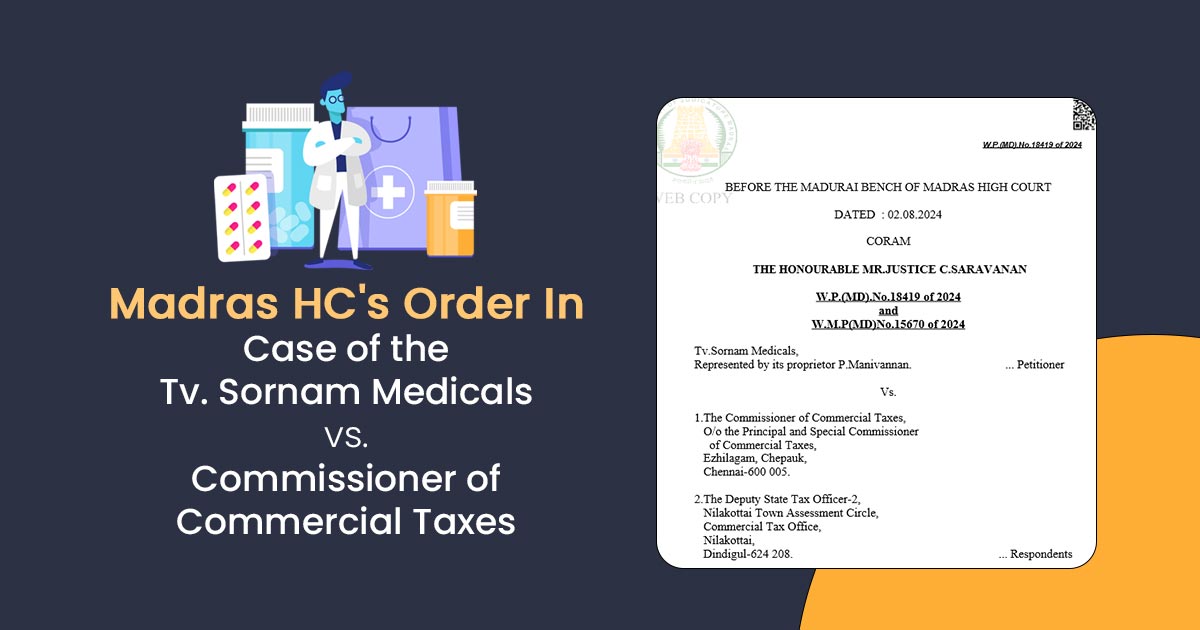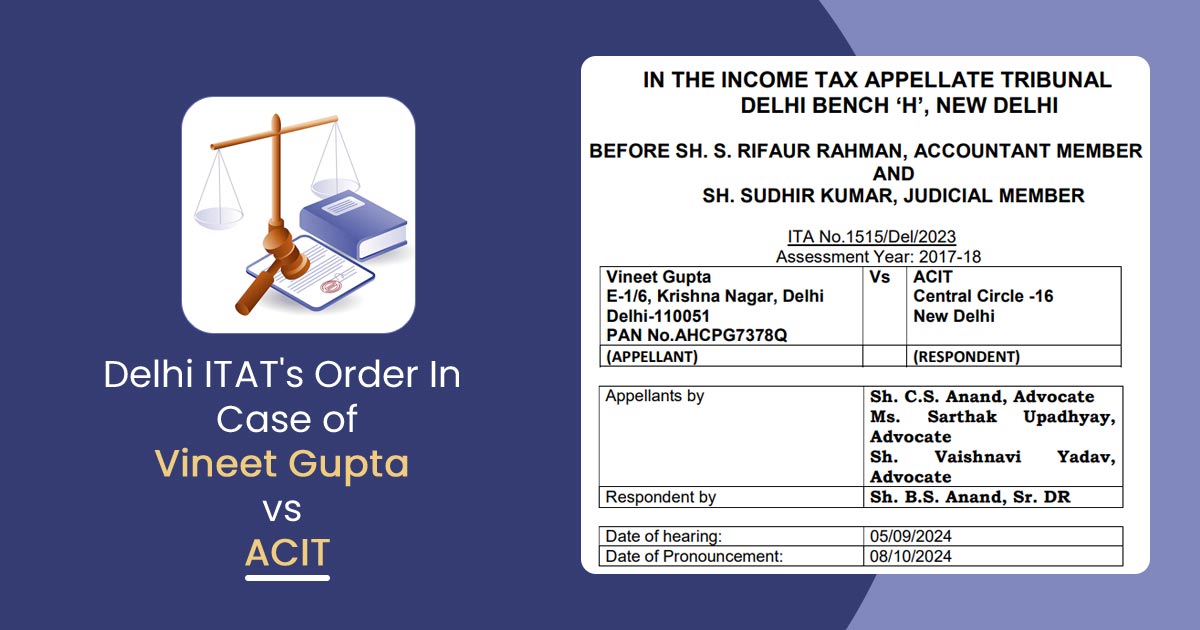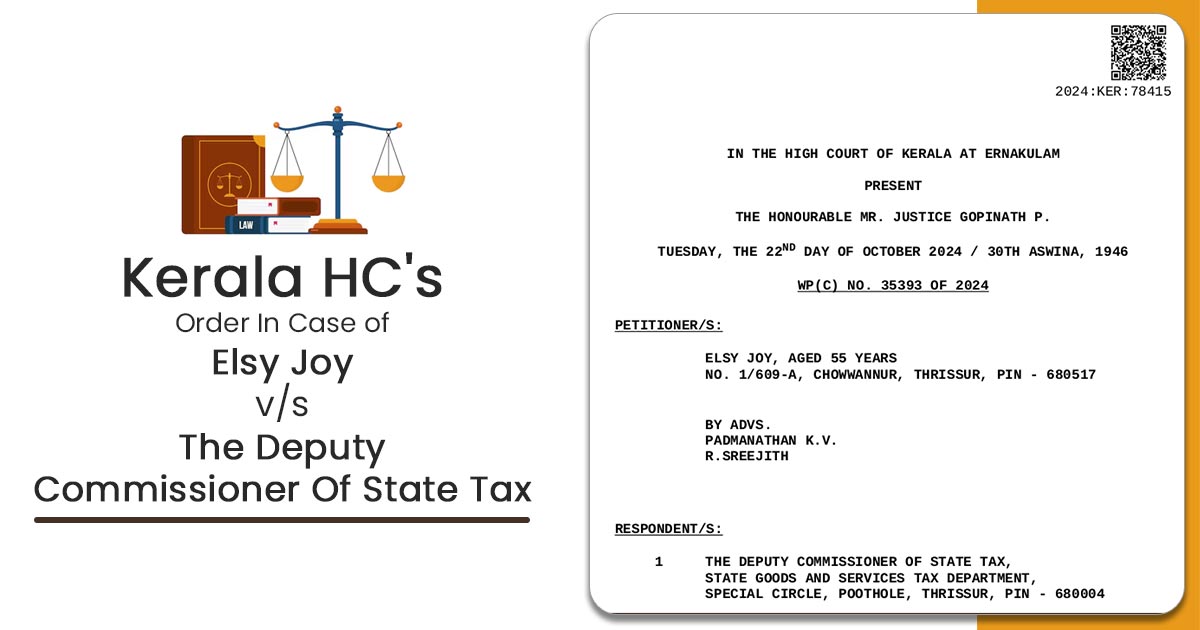
This article is going to be helpful for taxpayers confused about the provisions under Sections 111A, 112, and 112A of the Income Tax Act, 1961 regarding the capital gains taxes of Shares, Debentures, Mutual Funds, and other types of movable and immovable properties.
Need Demo of Income Tax Compliance Software
Section 111A Under Income Tax Act
Under Section 111A, an assessee is required to file a tax at the rate of 15% on the capital gained by him on short-term capital assets defined under Section 2 (42A) of the Income Tax Act, 1961. The listed securities on which Securities Transaction Tax is applicable come under this section like listed equity shares, listed mutual funds and listed units of business trusts.
The benefits of the slabs do not apply to the Non-Residents of India (NRIs). The deductions under Section VI-A are not provided under Section 111A.
Section 111A Exceptions
- Shares listed in the recognized Stock Exchange in the International Financial Service Center (IFSC) as Securities Transaction Tax (STT) are not charged on the transfer of such securities.
- If the assessee held the securities as stock in trade on business
- Foreign Institutional Investors (FII) are also not included as the securities held by them are indeed Capital Assets and there is no requirement of proving the same.
Remember the Points
Suppose the total income and STCG (short-term capital gain) after all the related tax deductions would be less than Rs 2.5 lakh. In that case, you must be secured with no tax load and no liability beneath section 111A, as the deductions up to the basic tax exemption amount would be permitted.
If the total income along with the STCG would be more than Rs 2.5 lakhs, you will be imposed a flat rate of 15% on STCG. But if the total income would be less than 5 lakhs, a reimbursement of up to Rs 12500 of the tax liability would be available beneath the present income tax regime.
Section 112 of the Income Tax Act
Under Section 112 of the Income Tax Act, an assessee is required to pay a tax at the rate of 20% or 10% after and before indexation respectively on the capital gained by him on long-term capital assets defined under Section 2 (29A) of the IT Act, 1961. All the securities whether listed or not whether listed or not and whether its shares, debentures, or units of a business trust and any other movable and immovable property are applicable under this section.
The deductions under Section VI-A are not provided under Section 112.
Section 112 Exceptions
- If Section 112A is applicable then Section 112 does not imply
- Not applicable to Non-Residents of India (NRIs)
Section 112A of the Income Tax Act
Under Section 112A the assesses are liable to pay a tax at the rate of 10% on the capital gained on the long-term capital assets being an equity share in a company or a unit of an equity-oriented fund or a unit of a business trust which attracts Securities Transaction Tax (STT), if the value of gains amounts to be more than INR 1,00,000. All the securities, which attract STT a unit of equity-oriented fund, or units of a business trust are applicable under this section.
The deductions under Section VI-A are not provided under Section 112A. Exceptions under Section 10(38) are not available if the provisions under the same are not fulfilled. Provisions 1 and 2 of Section 48 are not applicable.
Section 112A Exceptions
- If Section 112 is applicable then Section 112A does not imply
- Not applicable to Non-Residents of India (NRIs)
- Shares listed in the recognized Stock Exchange in the International Financial Service Center (IFSC) as Securities Transaction Tax (STT) are not charged on the transfer of such securities
- If assesses held securities as stock in trade for business
- Foreign Institutional Investors (FII) are also not included as the securities held by them are indeed Capital Assets and there is no requirement of proving the same.
Acquisition Cost (Capital Gains on or before 31 Jan 2018)
For the calculation of tax on the cost of acquisition, the values taken should be higher than, the actual cost of acquisition and lower than the financial market value of the asset and the sales consideration. The tax applies to the gains amounting above INR 1,00,000 at the rate of 10% and no tax below that.
For example, if the actual cost of acquisition is INR 5,00,000 Sales consideration is INR 6,00,000 and the financial market value of the asset is INR 5,50,000 then,
- Step 1- Lower FMV and sales consideration, that is, 5,50,000 is taken
- Step 2- The Value taken is compared with the actual cost of acquisition and the higher actual or value taken, that is, 5,50,000 is taken for the calculation
- Step 3- Calculation of Taxable Capital Gain: 6,00,000 minus 5,50,000 which is 50,000, so 50,000 will be taxable capital gain
- Step 4- Calculation of Tax Liability: 10% of capital gain, that is, 10% of 50,000 equals to INR 5,000
Note: According to Section 70 to Section 80, the losses under this section can be carried forward and set off accordingly and the remaining balance will be taxable.
Adjustment for Rs 1,00,000 Exemption
LTCG beneath section 112A with 10% would be calculated on the gains over Rs 1 lac.
CBDT said that in the FAQ section, the amount of Rs 1 lac would not be diminished from the total amount of the capital gains as the same would get deducted automatically through the software of the tax calculator.
Under section 112A of the Income Tax Act, the advantages conditions are
The below-mentioned conditions should be attained to take advantage of the reduced rate beneath section 112A of the Income Tax Act.
- Upon the acquisition and transfer of the firm’s equity stake, the securities transaction tax (STT) was furnished.
- For the units of the equity-oriented fund or units of a business trust, the STT was furnished during the time of disposal of the asset.
- Long-term capital assets must be securities.
- These long-term capital gains would not be entitled to the deduction beneath Chapter VI A.
- Section 87A reimbursement could not be utilized to offset the tax left on the long-term capital gains beneath section 112A.
Income Tax Section 111A Vs 112A
| Section 111A under the Income Tax Act | Section 112A under the Income Tax Act |
|---|---|
| Section 111A is for Short-Term Capital Gains (STCG). | Section 112A is for Long Term Capital Gain (LTCG). |
| As Per Section 11A STCG is taxed at 15% | As per Section 112A, LTCG is taxed at 10% |
| When the total income post to all the related tax deductions along with STCG (short-term capital gain) would be less than Rs 2.5 lakh then have no load and liability under section 111A) | Rs 1 lakh will be the LTCG exemption limit that is rendered if the gain surpasses Rs 1 lakh then only a 10% tax rate would be applicable under section 112A of the income tax act. |
| No provision for the offset of the short-term capital losses would be furnished under section 111A of the Income Tax Act. | For 8 years complying with the assessment year where you made the loss, you could carry forward the long-term capital loss which you could not set off. |











The new regime limit is upto rs. 3 lac. The slab has mistake . From 3-7 lakh 5% tax,but it should be 7.5 lac to take benefit of section 87 A. How FM made a mistake ?
“Section 87A allows taxpayers to reduce their tax liability if total income does not exceed Rs. 7 lakh in the new regime. The rebate amount is the lower of the income tax payable or Rs. 25,000 under the new regime. Latest income tax slab upto to Rs. 3,00,000 Income tax rate (%) is NIL and income tax slab Rs. 3,00,001 to 7,00,000 income tax rate is 5%.”
I have LTCG u/s112A amounting to 3.5 lacs and income from other sources amounting to 1.5 lacs. I want to know whether basic exemption limit can be set off against LTCG u/s 112A
I have long term capital loss u/s 112A in AY 21-22 of Rs. 2cr and it was carried forward. During the AY 23-24 I have a long term capital gain on sale of property of Rs. 2.5cr.
my question is can I setoff my capital gain on carried forward loss.
Yes, an adjustment under the same head of income is allowed.
Please let me know how to obtain/ascertain FMV while calculating LTCG under section 112 A
I have an LICI Ulip for Rs. 90000.00 with Accidental S/A of Rs. 115000.00, Policy Date 19/05/11 which matured on 19/05/21 with a gain of Rs. 180000.00. Is this income taxable ? If yes in which rate ? Is it a capital gain ? Maturity consideration was tax free for ulip upto Fy 2020-21. In ITR2 where should show this income. Please guide.
Whether for Non Resident Selling Property in India above 5 Crores , Is Surcharge restricted to 15% as per the Finance Bill 2022?
Do I have to pay short term capital gains tax if I have no income?
Getting and error ‘Long Term Capital Gain chargeable @ 10% – u/s other than 112A should be equal to corresponding income as per schedule BFLA’ – what does this mean ?
The basic question is still not answered. When we fill up schedule 112A, it shows LTCG as taxable and tax gets calculated on this LTCG even if it is less than 1 lakh. This is happening in excel utility of AY 21-22 & online utility of AY 21-22. Please guide how to show it in ITR so that there is no tax on it? As you said, its not a exempt income, so it cannot be mentioned in schedule EI. So where do we show it ?
When we fill up schedule 112A, it shows LTCG as taxable and tax gets calculated on this LTCG even if it is less than 1 lakh – Yes your observation is correct. This gets taken into account in the Part B – TI (Computation of Total Income) schedule, and if the overall LTCG is less than 1 lakh, it is not added to the total income for calculating final tax. This is using the latest ITDe-Filing utility for the AY2021-22.
I AM A NON RESIDENT INDIVIDUAL WITH HAVING USA PASSPORT. I HAD INVESTED IN EQ ORIENTED MF. AFTER ONE YEAR I SOLD THEM IN LITTLE LOSS. WHILE FILING ITR2 FOR AY 2021 22 I HAVE FILLED 112 A DETAILS.
WHERE I SHALL PUT IN THE CAPITAL GAIN SCHEDULE?
IS 115AD1(iii)provision APPLICABLE TO ME
whether can I deduct brokerage paid from stcg proceeds itself and show the net amount for tax calculation in itr
You can either show the net amount or show the brokerage under transfer expenses
Sir,
1. I have sold the rights entitlement of Reliance Industries Ltd for a short term gain of Rs.195/- in 27-05-2020. Where can I exactly show this Short term Income in IT Return? (No STT was paid)
2. I had with me 100 shares of Allahabad Bank and it was amalgamated with Indian Bank w.e.f. 01-04-2020. with the swap ratio of 115 Indian Bank shares for every 1000 Allahabad Bank Shares. I was allotted 11 Indian Bank shares, and for the Balance of 4.3556 shares of Allahabad bank shares Rs.195.20 was credited to my bank account. (No STT was paid). Where can I exactly show this long term Income of Rs.195.20 in my IT Return?
Kindly clarify.
ARUNACHALAM V
WHETHER LOSS ARRIVED U/S 112(A) OF THE I/T ACT, 1961 CAN BE C/F AND IF SO HOW MANY YEARS AND UNDER WHAT PROVISO TO THE ACT?
PLEASE CLARIFY
LOSS ARRIVED U/S 112(A) OF THE I/T ACT, 1961 CAN BE C/F AND S/F. FOR MORE DETAILS PLEASE REFER SECTION 112A OF INCOME TAX ACT 1961
Where do we claim the exemption of Rs 1 lakh on LTCG? The figure from Sch 112A gets carried to Sheet CG? Tax is calculated by the filing Java utility without giving effect to deduction of Rs 1 lakh.
As per 112A Rs, 1 lakh on LTCG is not exempt, its tax-free. hence while calculating the tax on LTCG its get deducted from the amount of LTCG
Hello for MF – income & share P&L, which return need to be filled?
For share in P& L ITR 3 NEED TO BE FILLED
I am filing returns for AY 2020-21 in Form ITR-2. My brought forward losses from the previous year are Rs. 72,000 and long term capital gain as calculated under Sch 112A of the form is Rs. 49,000. As per the provisions of the current Income Tax Act and also mentioned by you in the above article, the LTCG up to Rs. 1,00,000 is exempt from tax. However, under the CFLA-BYLA tab, the CG amount of Rs. 49,000 is appearing as taxable @ 10% and is getting set-off against brought forward losses, thereby reducing the amount of loss I can carry forward to future years. This goes against the provisions of the Act. Please tell me how can I get the form to compute the CFL correctly. I have downloaded the latest available ITR-2 from the e-filing website. Is it some error in the form or some error in filling the form?
As per section 112A amount of LTCG is tax-free not exempt up to Rs 1,00,000, hence while calculating the tax liability tax on LTCG up to Rs 100000 will be zero.
Q 1. If the LTCG is less than 1 lac then do we have to show it in the ITR. If yes then under which section of the IT Act and which column of ITR?
Q 2. If the LTCG on equity shares comes to more than 100000, then which ITR is to be filled.
1. Section 112A of the Income Tax Act is applicable.
2. It depends upon your other heads of Income, however, if you have only income under head Capital Gain then ITR-2 will be applicable
Schedule 112A – Your example shows a CG of 50,000 and tax calculated at 10% of 5000. But what about the statement that Tax is payable if CG is more than 1 Lakh only.
Tax is applicable if capital gain exceeds Rs 100000
1. Do we have to fill up MF details also on schedule 112 A of ITR2?
2. Where do we claim the exemption of Rs 1 lakh on LTCG. The figure from Sch 112A gets carried to Sheet CG. Tax is calculated by the filing excel utility without giving effect to deduction of Rs 1 lakh.
Exception no 5 as given to Sec 112A is very confusing if it is correct.
Confirm in sheet 112a of itr, fmv cell to be filled as “0” for securities bought after 31st Jan 2018.